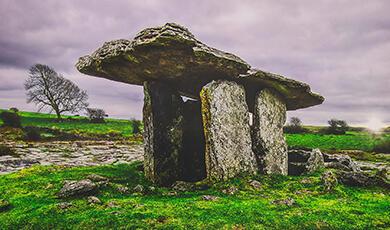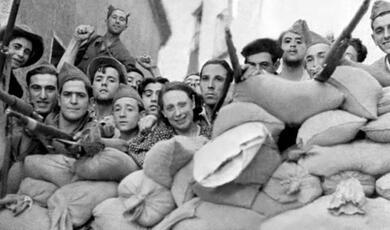The Governance and Voting System of the City of London
Share
- Details
- Text
- Audio
- Downloads
- Extra Reading
The unique governance and voting system of the Square Mile will be explained.
Download Text
17 January 2013
The Governance and Voting System
of the City of London
Professor Tony Travers
The City of London is an ancient institution, with roots in Anglo-Saxon England. Indeed, the Saxons developed their ‘London’ in broadly the same place as the Romans had located ‘Londinium’. Saxon London operated a form of local government which still has resonance today. Some of the practices and names used by the Corporation of the City of London have their origins before 1066. This is a remarkably long period of continuous evolution, even in Britain, with its ancient Monarchy and Parliament.
The City of London had enjoyed rights and privileges since the time of Edward the Confessor, a monarch perhaps better known in history for his piety and, thus, as the founder of an abbey in (then) distant Westminster. After the defeat of Edward’s successor, Harold, at the Battle of Hastings, Norman King William granted the City its first charter – which can still be seen at Guildhall today. Subsequently, the City of London has survived all attempts to expand it, merge it, or abolish it. It exists today, in 2013, alongside London boroughs which took control of local government as recently as 1965.
For many centuries, the City was London. Under the Romans, Anglo Saxons and, indeed, until about 1550, the City of London was virtually all there was of ‘London’. There was some development at Westminster, across the river at Southwark and to the east, but most Londoners lived within the ancient City walls. Expansion took place in earnest under the Tudors, who sought unsuccessfully to contain the growth of London, with much faster growth in the 17th and 18th centuries during which time the City’s residents became a minority of the capital’s overall total population.
By the standards of the 17th, 18th and 19th centuries, and while England (and then Britain) developed into a Parliamentary system of government with a Monarch as a ceremonial head of State, the City of London was, by comparison with most central and local government, plural and democratic. Writing in his excellent book Reforming London, John Davis observes:
“An ostensibly democratic constitution had made the City Corporation harder to stigmatize than most ancient municipalities when it was investigated in the 1830s. At its base were the twenty-six City wards, in which rated householders assembled each December to elect the members of the Court of Common Council…this body was the Corporation’s main policy maker by this time”[1]
In the early-to-mid 19th century, Parliament still had MPs returned from ‘rotten’ boroughs’, where there were few if any voters. Local government was patchy and underdeveloped. Much of London beyond the City was ‘parished’ and not well governed. The City had relatively good public services, having secured water supplies as early as the 1600s and, compared with the rest of the growing metropolis, a tolerable (or, at least, less inadequate) sewage system.
During the 19th century, Davis points out that the City of London built or improved Queen Victoria Street, Cannon Street, Farringdon Street, Holborn Viaduct and Ludgate Hill. It rebuilt Blackfriars Bridge and removed tolls from Southwark Bridge, restored Billingsgate and re-built Smithfield markets. It also purchased Epping Forest for the public, built artisans’ dwellings, opened Guildhall Library and created Guildhall School of Music.
According to Gibbon and Bell, in their History of the London County Council:
“Outside the ancient walls [of the City] was confusion almost indescribable. There were, in the first place, seventy-eight vestries, with powers as to sanitary nuisances, roads and other matters…”
There were many different kinds of vestries, commissioners for sewers and chartered liberties….
“…overlapping with all these there was, for various functions – sewers, paving, lighting, surveying buildings – a crowd of different authorities, in all no less than three hundred bodies comprising about 10,500 members, mostly self-elected and with no responsibility to the ratepayers. They operated under about two hundred and fifty separate statutes, raised rates and loans according to their own fancy and had numerous unqualified and unpaid functionaries”.[2]
The authors clearly suggest that the City of London was, compared with the rest of the capital, well governed.
Thus, until the 19th century, the City of London Corporation was a single unit of government for most or much of the built-up area of London. It was relatively democratic by the standards of the times and it had better public provision than the rest of the capital. However, from the early part of the 19th century onwards, a number of factors were to change the terms of debate.
First, the chaotic nature of local government in the wider, built-up, area of what was by then recognised as a metropolis led Parliament and reformers to press for London-wide government, notably to improve sanitation and to provide other infrastructure. Second, there were also calls for the reform and improvement of the capital’s local government. Large numbers of parishes and ad hoc bodies were seen as inefficient and inequitable. Third, Britain took significant steps towards being a fully-developed modern democracy with a wider franchise, moving rapidly towards ‘one person one vote’ and reducing the extent of business voting. Fourth, the City of London itself resisted pressures, including from Parliament, to become London’s city-wide government.
Once these factors began to affect the terms of debate, the City’s form of government began to be seen as increasingly unique and, to some, unreformed. Although it has been changed modestly over the 180 or so years since the 1830s, the City’s governance would still be recognisable to those who lived in the capital at the time of the Reform Act, 1832 and the Municipal Corporations Act, 1835.
Today, the City’s government is based upon 25 wards, which were reformed in 2003, but retain their original, historic, names (for example, ‘Bread Street’ and ‘Candlewick’). These wards contain voters who elect the Common Council and, separately, Aldermen. Wards elect between two and ten councilmen each. The Common Council and the Court of Aldermen are chaired by the Lord Mayor, who is assisted by two Sheriffs. The Lord Mayor and Sheriffs are chosen by members of City livery companies[3].
Aldermen originated in Anglo Saxon London, where they ran the City, having both administrative and judicial functions. From the 13th century onwards, Aldermen consulted citizens from their ward about the “common affairs of the City”. From 1376 onwards, there were regular meetings of this ‘common council’, which has subsequently become the City’s governing body. Today, Aldermen are elected, one for each ward (thus, a total of 25), for six-year terms and sit on the Common Council.
The Common Council has been elected since 1384, and consists of 100 members, plus the 25 Aldermen. All-out elections for the Common Council occur every four years, with the next being held in March 2013. In a powerful echo of the past, ‘wardmotes’ take place once each year (in the spring) to allow voters to meet Common Council members. Today, the Court of Common Council is analogous to, and has the powers of, a London borough council, though elections in the City are traditionally not fought on party political lines.
The Sheriffs were, until 1199, Crown appointments. They collected taxes and represented the Monarch in the City of London, as well as fulfilling judicial functions. It is worth remembering that King William I (the Conqueror) built the Tower of London just beyond the boundary of his new city, so as to maintain a watchful eye over it. The Sheriffs became subordinate to the City’s Mayor when this role was created in 1189 and now act as assistants to the Lord Mayor of London. They are elected by liverymen of the City Livery Companies, for one year, each Midsummer Day.
The Livery Companies have, for centuries, been guilds based on trade and craft. Today they are membership organisations linked to professions, generally with educational, welfare and other charitable functions. There are currently 108 companies, whose Freemen can, following a vote by the Court of the Company, become liverymen. These liverymen attend ‘Common Hall’, an event held each September, to select the new Lord Mayor. Usually this is done by acclamation, though a vote is possible. To qualify to be Lord Mayor, an individual must be an Alderman, a Sheriff and must not have already been Lord Mayor. Like the Sheriffs, the Lord Mayor holds office for one year.
The Lord Mayor has a number of functions, including being chair of the Court of Aldermen and the Court of Common Council. He or she represents the City, (both the local authority and the ‘City financial’) within the UK, overseas and to visitors. The Lord Mayor has a number of other responsibilities, including Chancellor of City University, a trustee of St Pauls Cathedral, Admiral of the Port of London, Chief Magistrate of the City and president of Gresham College.
The electorate for the Common Council and Aldermen consists of residents, sole traders, equity partners of businesses plus a number of voters from incorporated and unincorporated bodies located within the City of London. The system was reformed in 2003 to reform the franchise, giving greater representation to the largely residential wards and widening the scope of the business vote. A further reform will take place this year to change the number of Common Council representatives per ward. Votes are allocated to voters within relevant business (or other) organisations a sliding scale that takes account of workforce numbers. Eligibility to vote is determined by rules that take account of length of service working in the City. Processes for selection within organisations must be open and clear, though there is discretion within organisations about the appointment of voters.
The City of London Corporation, with a membership elected as above, has all the normal responsibilities of a London borough, plus substantial additional ones. Thus, it runs social care, schools, environmental provision, highways, leisure and planning services. It has its own police force, the City Police, as well as operating the Barbican Centre, the Museum of London, London Metropolitan Archives, the Old Bailey, several tracts of open land, including Hampstead Heath, Epping Forest, Burnham Beeches and West Ham Park. The City is also responsible for a number of major markets, Port Health (for the Thames) and Heathrow Animal Reception Centre. Finally, the City promotes the ‘business City’, including financial and other professional services across the UK.
Funding for most of this provision comes from council tax and a retained proportion of the business rates paid in the City. But the City of London also uses resources from endowments held within the so-called ‘City’s Cash’ and The City Bridge Trust. These, private, sources, have attracted some of attention and criticism, mostly on the grounds that some critics believe they are unclear how the resources are used[4]. The City has latterly published more detail about the use of its endowment income[5].
There can be no doubt that the City of London operates with a very different form of governance and voting than any other London borough or British local authority. It is anomalous, though only in a way arguably matched by the House of Lords and the Monarchy. The fact it has 10,000 residents but 300,000 people working within its boundaries is certainly an order of magnitude different even to, say, Westminster (220,000 residents and 600,000 employees) and Camden (220,000 residents and 300,000 employees).
The City can be argued to be ‘less democratic’ than other councils, in the sense that it does not operate on a straightforward ‘one person one vote’ system. But it is clearly more democratic than the huge number of quangos that run public service in Britain. Indeed, schools and hospitals are micro-quangos and not democratically-representative bodies.
In recent years, the development of Business Improvement Districts (BIDS) and the Business Rate Supplement has added new mechanisms, analogous to the City, to the British system of governance. BIDs are created by a vote among business ratepayers and, once created, can set a local tax on their area. A ‘Business Rate Supplement’, of the kind used to part-fund Crossrail, can be introduced in any part of the country, allowing non-domestic ratepayers to agree to levy a local tax to fund projects related to economic development. Voting by business ratepayers has re-entered the political system.
In considering the City of London today, it is hard to better the conclusions of the Herbert Commission on London government, which reported in 1960. It said:
“The City is in some respects a modern local authority…in other respects [it is] unlike any other municipality. Its wealth, its antiquity, the enormous part it has played in the history of the nation, its dignity, its traditions and its historical ceremonial make the City of London an institution of national importance”.[6]
Herbert then added, with reference to reforming the City as part of the creation of new London boroughs:
“Logic has its limits and the position of the City lies outside them”[7].
The City’s long-evolved voting system is unique, but is set within the wider democratic system of contemporary Britain. It would not be invented in this way today, but then neither would many aspects of our government system. On a number of occasions since the 1830s, the City of London Corporation has survived efforts to reform or abolish it. Each time there has been a major reform of London’s government, the city has emerged unscathed.
From 1855 to 1888, it was one of the bodies represented on the joint committee which ran the Metropolitan Board of Works. The 1899 reforms, which created the metropolitan boroughs within the (new) London County Council boundary, provided the City with all the powers of a metropolitan borough, but leaving it with other major responsibilities such as the police. The 1965 reforms, which created the Greater London Council (GLC) and today’s London boroughs, also retained the City alongside the new boroughs. Finally, when the Inner London Education Authority (which had previously been a special sub-committee of the then former GLC) was abolished in 1990, the City became a full education authority for the first time.
There were significant reforms of the capital’s governance in 1829, 1855, 1888, 1899, 1965, 1986, 1990 and 2000. Looking ahead, there will doubtless be another reorganisation of some kind. From time to time there are proposals to reduce the number of boroughs or to strengthen the Greater London Authority’s powers. Any serious proposal for a configuration of boroughs which resulted in a smaller number than the present ‘32+1’ formation would create pressure on the City.
The City has attracted new opponents as the result of fallout from the banking crisis. The City of London Corporation and ‘the City’ are intertwined and inseparable. The damage done to the reputation of banks and bankers has affected the terms of debate. The ‘Occupy’ movement’s encampment outside St Pauls Cathedral, in particular, required the City leadership to defend its position.
However, the City of London – in both senses – still has wide support in Parliament and among London boroughs. Its leaders, notably successive chairs of the Policy Committee since the 1980s, have shown sensitivity to the changing politics and social realities of the capital. Its resources have often been used charitably and outside its boundaries. Crucially, there would be many losers if the City were radically reformed. Moreover, no one in Britain can surely believe that the structural reorganisation of local government in London is the solution to a problem which could not be solved another, less destructive, way.
The City of London has proved adept at evolving to survive for about 1000 years. It would be surprising if it did not outlast many, and possibly most, of today’s political institutions.
© Professor Tony Travers 2013
[1] Reforming London The London Government Problem, 1855-1900, John Davis, Clarendon Press, Oxford, 1988, page 51
[2] History of the London County Council 1889 -1939, Sir Gwilym Gibbon and Reginald Bell, MacMillan, 1939, page 20
[3] Much of this detail is derived from the City of London’s website (http://www.cityoflondon.gov.uk/Pages/default.aspx)
[4] “City of London spending and income: where does the money come from, and where does it go? By Simon Rogers and Ben Quinn, The Guardian, 1 November 2011[5] See: ‘City of London funds’ at http://www.cityoflondon.gov.uk/about-the-city/who-we-are/budgets-and-spending/Pages/City-of-London-Funds.aspx
[6]Royal Commission on Local Government in Greater London, 1957-60 (Herbert Commission), Cmnd 1164, HMSO, 1960
[7]Royal Commission on Local Government in Greater London, 1957-60(Herbert Commission), Cmnd 1164, HMSO, 1960
This event was on Thu, 17 Jan 2013
Support Gresham
Gresham College has offered an outstanding education to the public free of charge for over 400 years. Today, Gresham College plays an important role in fostering a love of learning and a greater understanding of ourselves and the world around us. Your donation will help to widen our reach and to broaden our audience, allowing more people to benefit from a high-quality education from some of the brightest minds.


 Login
Login







